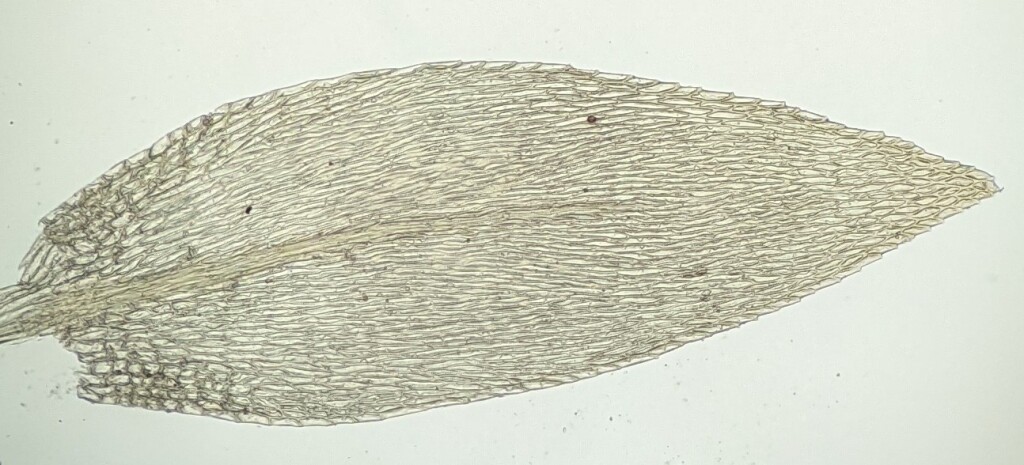Scorpiurium cucullatum
(Mitt.) HedenäsDensely interwoven mats on bark, logs and soil. Primary stems creeping. Secondary stems mostly c. 10–15 (–20) mm long, fastigiately or subpinnately branched, light brown, with scattered fascicles of brown rhizoids on ventral surface, central strand present. Primary stem and branch leaves differentiated. Primary stem leaves spreading when moist, erect when dry, ovate-triangular, acuminate, denticulate or entire. Branch and secondary stem leaves loosely spreading when moist, erect when dry, ovate-lanceolate to elliptic-ovate, mostly 0.6–0.8 (–0.9) mm long, 0.35–0.4 mm wide, concave when moist, subtubulose when dry; costa extending c. 55–85% of leaf length; apex broadly acute, obtuse or rounded, without a hair-point; margins bluntly denticulate in apical ¼ or slightly more, inflexed or inrolled when dry, without a distinct border; cells near apex and margins rhombic, 21–30 μm long, c. 9 μm wide; cells in mid leaf more elongate, 25–83 μm long, 5.5–8.5 μm wide; alar cells oblate to rectangular, scarcely inflated, forming a well-defined ovate or ovate-triangular group that extends 15–35% of leaf length along leaf margins. Setae 4–11 mm long, yellow-brown, weakly papillose throughout or smooth above. Capsules weakly inclined, obovoid or short-cylindric, curved along upper side, straight along lower, or symmetric, 0.9–1.1 mm long. Operculum rostrate, c. 0.4 mm long.
GipP, NIS, EGU, HSF. Recorded on trees, including introduced willows, or on logs and soil beside watercourses mostly southeast of Melbourne but with records also from Dargo and the Mitta Mitta River. Also QLD, NSW and Tas. New Zealand.
 Spinning
Spinning

